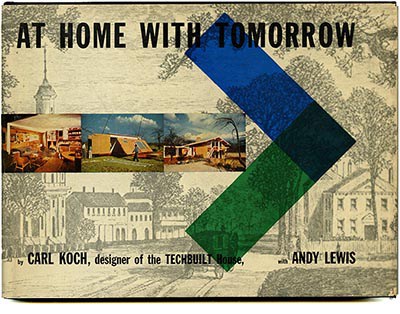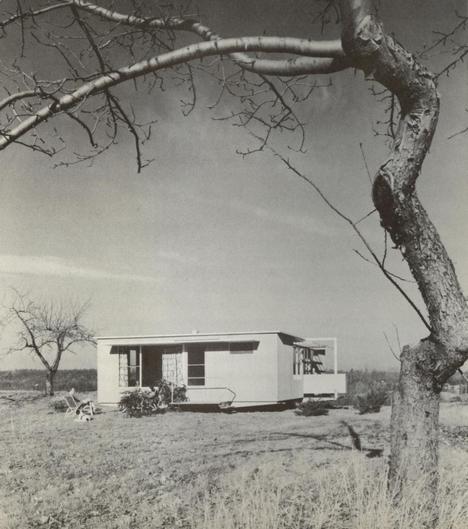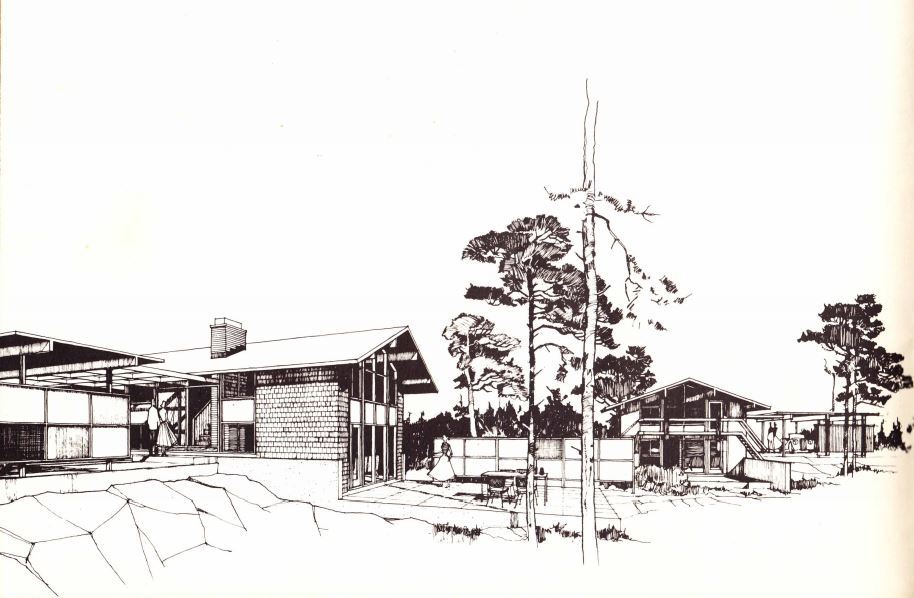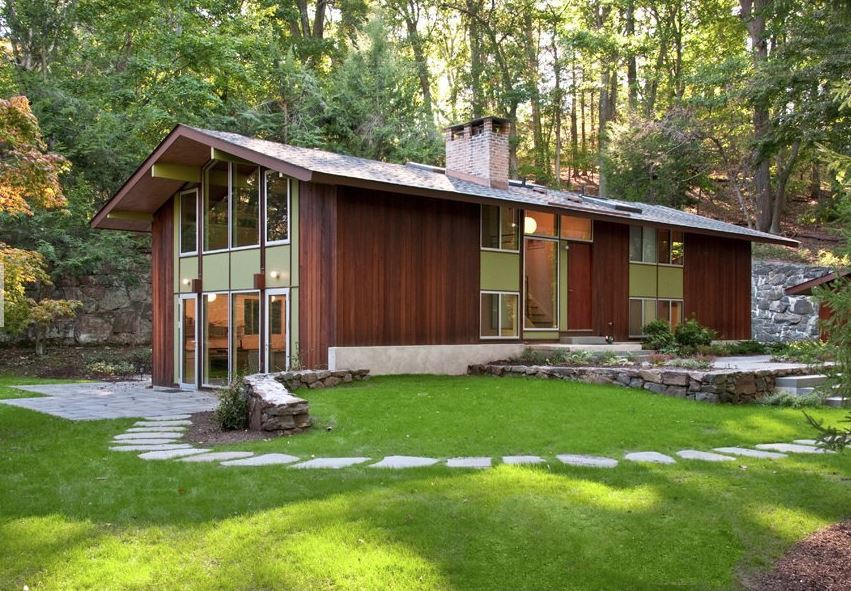
Case Study: Mid-Century Modern Deck Houses
We are actually responding in a traditional way when we build houses that are consistent with our national temperament and technological progress. There is all the opportunity in the world to make a modern house reflect good living and a happy approach to life. But it requires spending some time with matters of the mind and spirit. – Carl Koch
The Inspiration Behind The Deck House
A “deck house” typically refers to a type of affordable mid-century homes found clustered throughout the country built using panelized prefabricated components in a post and beam construction. This allows for vast expanses of glass and an open floor plan. These homes utilize natural materials like wood and stone throughout, and are typically found nestled in a wooded setting, with little disruption to trees or other natural occurrences around it.
Carl Koch is the lead figure behind the creation of deck houses. According to At Home With Tomorrow, he began his lifelong mission to create “the good, the beautiful, and the inexpensive” in housing while at Harvard under the guidance of Walter Gropius, who is famous for the development of the Modernist Movement in architecture. Gropius’ interest in utilizing industrialization and his work with German architect Konrad Wachsmann in developing a prefabricated “Packaged House System” clearly influenced Koch during his education.

At Home With Tomorrow” by Carl Koch. Published by Rinehart and Company in 1958.
Koch was further influenced in Sweden working for Sven Markelius, giving him a foundation in clean Scandinavian design. And his time spent as a Monuments Man in the MFAA during WWII is said to have fostered his interest in alternative building systems using surplus material left over from the war. After the war, he turned his focus on the housing shortage, a symptom of the Great Depression, WWII, and returning Veterans with growing families and VA mortgage loan offers.

The Original Acorn House in Concord, MA. Photo by Ezra Stoller.
In 1946, Koch built, together with John Bemis, the Acorn House, which could be considered the prototype for all future deck houses. Located in Concord, MA, this house was based on a central core, with rooms that could be “unfolded” around it. The structure used innovative skin-like panels made from paper impregnated with plastic. However, the experimental skin system did not prove easy to mass produce and in the end, the Acorn House proved to be a learning experience for Koch.
Techbuilt: The Prototype of Deck Houses
In 1953, his Techbuilt house was launched, after a decade of research. According to NC Modernist Houses, the American Institute of Architects awarded it “Best Development House” and The New York Times cited it as “People’s Choice”. This home would be a prototype for his future offerings at his company, Techbuilt, which were characterized by a modular panelized assembly system, as well as the use of post and beam construction to free up the interior of unwanted partition walls. The structures were also incredibly affordable.

Architectural Rendering of a Techbuilt house. Source: Techbuilt Brochure.
The process of building a deck house happens today much the same as it did in the 50’s and 60’s. A client or builder selects the floor plan of their choice. Some customization to the plan is made depending on site conditions and client needs. Techbuilt, or today, Acorn Deck House Company, builds the wall, floor and roof panels off-site, as well as pre-cuts the framing members. These components, along with interior cabinetry, doors, and windows, are delivered to the site. There, a builder who has been trained by the manufacturer assembles the house. The client has their choice of interior and exterior finishes, and local trades install plumbing, electrical and mechanical systems.
The Next Generation of Modern Housing
The exposed Douglas fir beams, wood panel ceilings and mahogany trim and window casements are what give the deck house a lot of its signature aesthetic. A wall of glazing, open floor plan with sloping roof rafters extending beyond the walls and a low placement in seemingly untouched nature are further elements that have endeared these houses to the modern homeowner. A move to restore abandoned deck homes instead of razing and building anew is becoming more common as awareness is raised on the history and spatial qualities these homes embody.


Before and After Photos of the Tuxedo Park House. Photos by Carl Bellavia via Dwell.
In addition to the renovation of deck houses, we also need to revisit the practice of designing houses that are small and affordable yet can be built quickly, using materials that are sustainably produced, while achieving high quality space. This is lacking in the developer designed housing tracts currently being built. The reasons for the current housing crunch are different from the 1950’s crunch, but the drive for a solution is as strong now as then.
Using further advancements in material and fabrication technology, allowing a small footprint to work efficiently and sit lightly on the site, and taking into consideration the modern family’s needs, there are many reasons to revisit Koch’s lifelong work of creating housing that is good, beautiful, and inexpensive.
There are many reasons to revisit Koch’s lifelong work of creating housing that is good, beautiful, and inexpensive.
David Fixler put it nicely at the end of his “Hipsters in the Woods” article on mid-century deck houses and communities in Massachusetts:
“The communities and their houses have renewed relevance in our present circumstances. They embody the American dream of a commodious single family home in a supportive community without material excess and in maximum harmony with its environment – a minimal touch on the land… They serve to remind us that Modernism still has much to teach us… Driven by disgust and exhaustion in contemplating the excess of the last two decades, as well as economic need, more people are discovering the full panoply of values that are inherent in these neighborhoods. And to my sons, and many of their generation, they’re just plain cool.”
Here’s to the next generation of affordable, ethical, and beautiful modern homes.






Cathryn Rich
That is my house in the cover picture. I don’t necessarily mind the use, but you must ask permission and credit the photographer, provided that he consents. Email me for details and we can discuss.